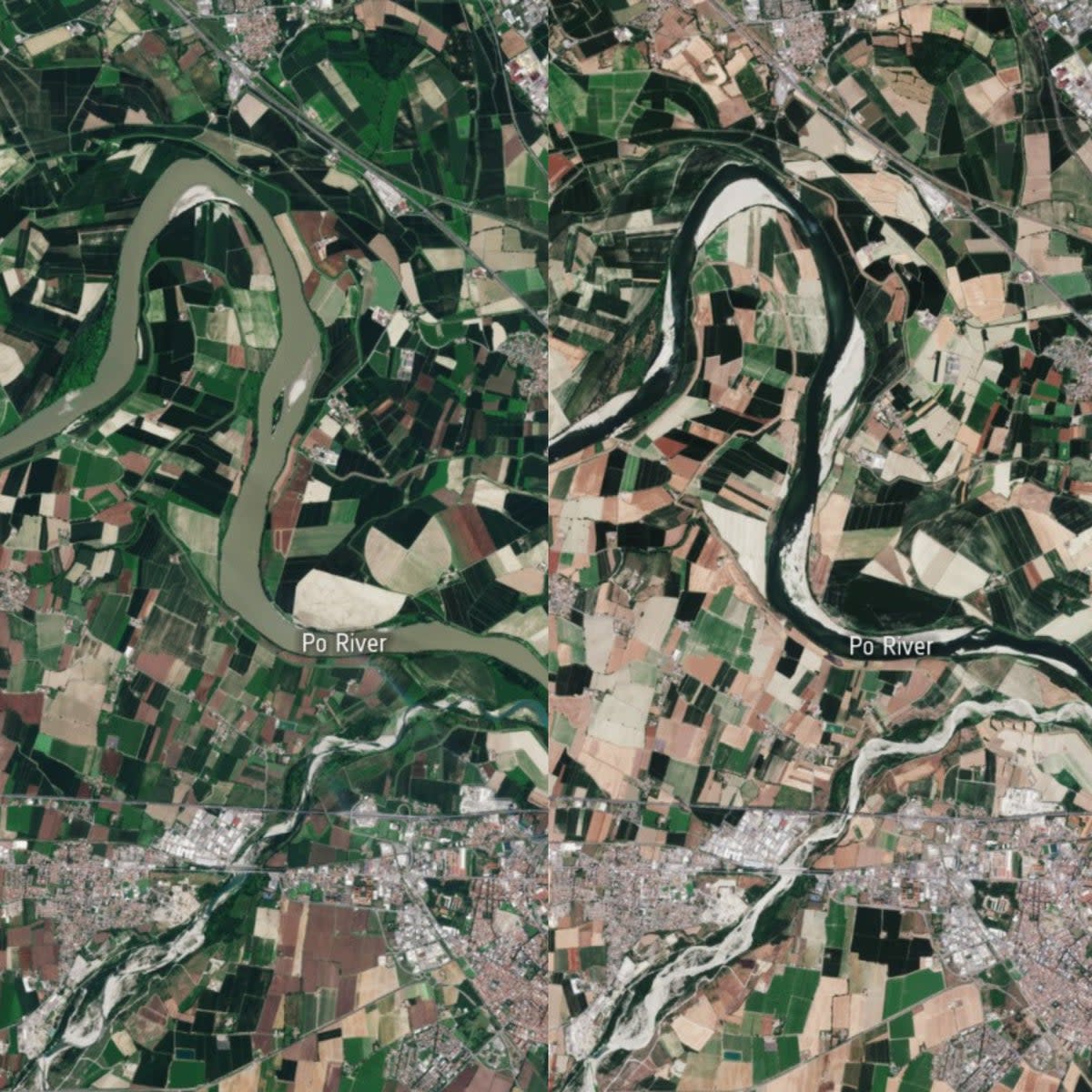‘Worst drought in 70 years’ – satellite images show Italian river at record low

These satellite images show the River Po’s worst drought for 70 years – threatening around a third of Italy’s agricultural production.
The ESA Copernicus Sentinel-2 images reveal how the river has significantly shrunk between June 2020 and June 2022.
A state of emergency has been declared to allow authorities to cut through red tape and take action immediately, such as imposing water rationing for homes and businesses.
The Po is Italy’s longest river, and runs for more than 400 miles through the wealthy north of the country.
However, many stretches of the waterway have run dry and farmers say the flow is so weak that sea water is seeping inland and destroying crops.
The government said in a statement that the emergency measures would cover lands that bordered the Po and the water basins of the eastern Alps.
Nella zona del ponte della Gerola (Pavia), il Po sembra un torrente. La siccità che ha colpito il Grande Fiume ha ridotto drasticamente la portata delle acque.#meteo #radar #italia #ambiente #estate #siccità #fiume #po pic.twitter.com/mAzXaQVofW
— Meteo & Radar (@meteoeradar) July 3, 2022
More broadly, it also introduced a state of emergency in five northern regions – Emilia-Romagna, Friuli Venezia Giulia, Lombardy, Piedmont and Veneto – earmarking an initial €36.5m (£31.4m) of funds to help them tackle the water shortage.
“The state of emergency is aimed at managing the current situation with extraordinary means and powers, with relief and assistance to the affected population,” the government said.
It added that further measures could be taken in future to deal with the drought, which water authorities say is increasingly affecting central Italy after an extremely dry winter and spring followed by an exceptionally hot early summer.
Italian media have reported that the prime minister, Mario Draghi, is also considering appointing a commissioner to coordinate the drought response, in a move reminiscent of the appointment of a commissioner to oversee the country’s response to the coronavirus crisis in 2020.

